| | Dear Friend, I am excited to share after completing a fantastic Duxbury Docents training session earlier this year, we have 11 new docents, making a team of 20! With a larger docent team, more low-tide shifts can be covered, and more visitors will have the opportunity to learn from our dedicated docents about the marine life, habitat, and the protected status of Duxbury Reef State Marine Conservation Area. As the end of the second round of Duxbury Docent training came to a close, I felt a strong sense of gratitude. Duxbury Docents give their personal time to help visitors protect the marine life at Duxbury by helping them understand how they can improve their relationship with the vulnerable and delicate marine life that clings to the rocky tidepools. They were so eager to help, that during the training sessions when trainees saw people unknowingly doing potential harm, a few trainees decided to practice their docenting skills with visitors during our learning sessions. We were very lucky to learn from amazing educators and presenters, but one special training presentation really continued to resonate for me. It was when Dean Hoaglin, Dance Captain and Headman, of the Coast Miwok Tribal Council, generously gave his time to share with us the Coast Miwok cultural relationship to Marin’s coastal lands. It felt tremendously important for us to hear about Coast Miwok practices that honor relationships with people and place, and to learn about what is important to the Tribal Council members today. This was especially relevant as the docents prepare to provide interpretation to visitors on Duxbury Reef, which is part of unceded lands of the Coast Miwok people. Dean’s words reminded me that a practice of gratitude helps instill respect and honor for the people, the wildlife, and the place where we visit and reside. I also felt gratitude for the Duxbury Reef itself. Visiting a beloved place regularly can teach us lessons, if we are willing to slow down and observe. The reef, through its daily tides and seasonal weather conditions, teaches us about the resilience of life in the face of change. The interdependent creatures, algae, seawater, and rock teaches us that life is all about relationships, and our behavior in relationship can harm or strengthen us (all life included). Learn more about the docent program on our website, how to support, or join our 2024 training. With summer right around the corner, we are gearing up for a busy few months! Our summer interns have joined our team, and we expect our campaigns focused on California’s marine protected area (MPA) management, and Point Reyes National Seashore water quality and tule elk plans to keep us hard at work in July and August. We are also in the midst of planning and installing our next office exhibit focused on climate change and our coastal communities. We anticipate our next exhibit to open on July 29th. Until then, be sure to swing by and say hello to our team on Friday and Saturday afternoons and visit our outgoing display, Advocate: Protect What You Love. Our summer climate exhibit will feature several touchstone events on Saturdays that will be run by our team. Thank you for your continued support of EAC; our work is made possible because of you. In gratitude, |
|  |
|
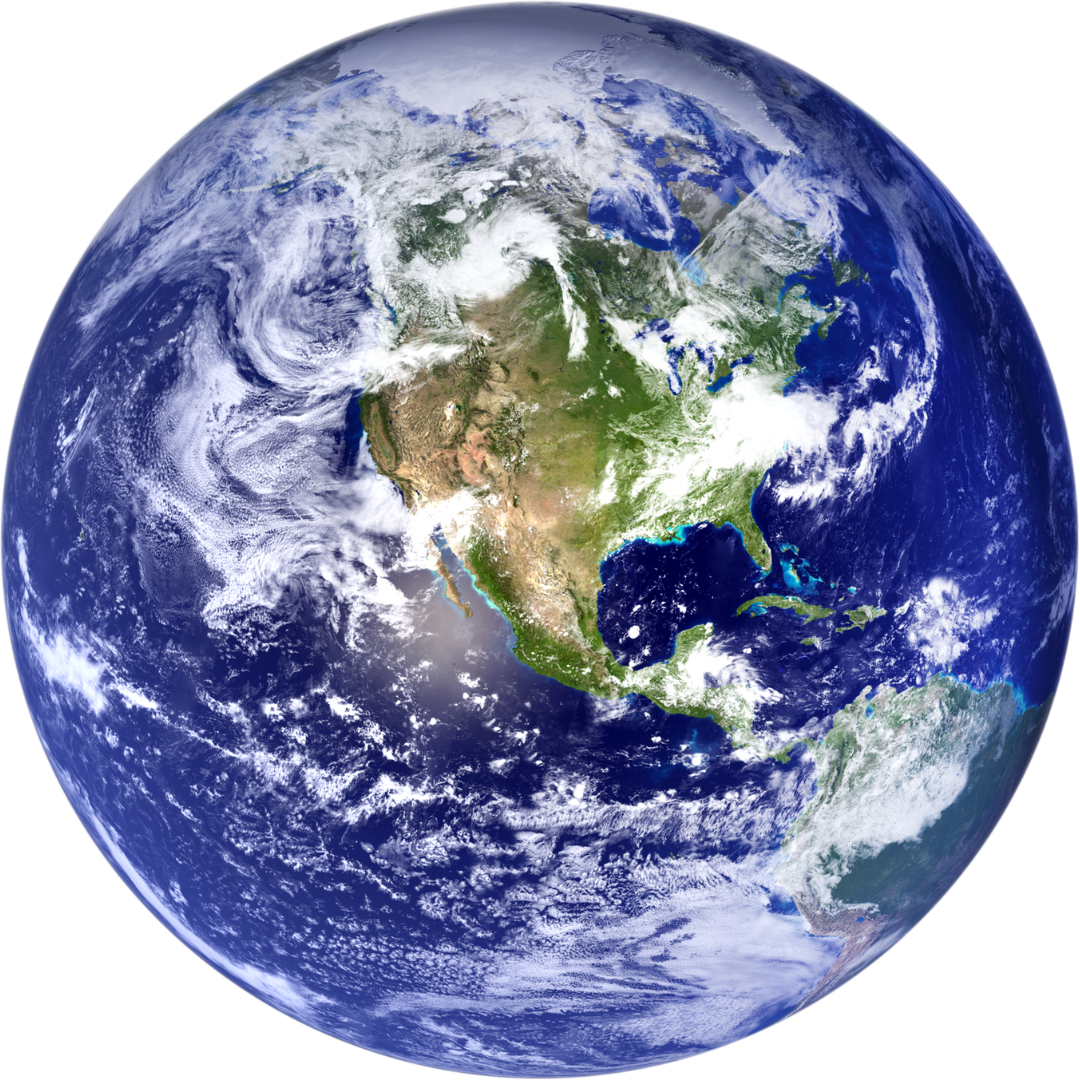 | Call for
Climate Action Artwork We are finalizing our Summer 2023 Climate Crisis Community Educational Display, Our Coastal Climate, and we want to ensure our display includes messages of hope, solutions, and community resilience. As you know, the climate crisis is a very depressing topic. We need your help! If you have paintings, poetry, short stories, sculptures, or photography featuring messages of climate solutions and hope, we want to borrow and feature your work on our walls from July 20th through October 31st! Community resilience and hope artwork topics could include: renewable energy, transportation solutions (public, personal, bikes, etc.), environmentally sustainable development, managed retreat (moving away from the shoreline, nature-based solutions, habitat restoration and conservation (land, freshwater, marine ecosystems), restorative agriculture, reductions in food waste and composting, reduce and repair to reduce consumption, voting, and finding your people (your climate action network, community or environmental organization) to taking action to stop the use of fossil fuels. To submit your artwork, please complete the form by clicking the button below, and we will be in contact with you soon! |
| |
|
| Leslie leads EAC’s Marine Protected Area Watch and Duxbury Docent programs and leads EAC’s stewardship volunteer program outreach efforts including Litter Bugs Me and Coastal Clean Up Day. In addition, each summer she mentors a team of Coastal Advocate Interns, teaching them important skills for future careers in environmental conservation and science. P.S. Be sure to mark your calendars for our summer events! There are many ways to get involved to protect the places you love this summer. Join us for an upcoming MPA Watch Training, our July 15, 2023 Beach Clean Up at Drakes Beach to celebrate the launch of the Cleaner California Coast Campaign, and save the date for our new office exhibit opening on July 29th! |
|
|
| | Busy Summer Ahead for Point Reyes National Seashore
Morgan Patton, Executive Director It’s shaping up to be a busy summer for the Point Reyes National Seashore (Seashore) public planning processes and updates. You can count on EAC to keep watch and participate in what’s coming up with our eyes on protecting coastal resources. On June 9th, the Seashore announced their proposed action for the Tomales Point Area Plan that cites their preference to remove the tule elk fence and enhance opportunities to improve recreational and visitor experiences at the historic Pierce Point Ranch. This announcement is excellent news for the tule elk population that has been behind the elk fence for decades. We anticipate the Seashore to release a newsletter and environmental assessment (EA) for public review and comment later this summer to kick off a public process that will extend through next year. The Seashore is also preparing its annual Water Quality Report to provide to the Coastal Commission later this summer. The annual report will be provided to the Commission staff, partner agencies, and the public for review and comment before making its way to the Coastal Commission. The annual report includes the comprehensive water quality sampling results, updates on violations and issues from last year, implementing best management practices, and more. The date of the summer Commission meeting has yet to be determined. Over the last couple of weeks, we have been in conversations with the Seashore, Coastal Commission staff, and Regional Water Quality Control Board staff following up on deliverables from last September’s Coastal Commission meetings. Continue Reading |
|
|
| 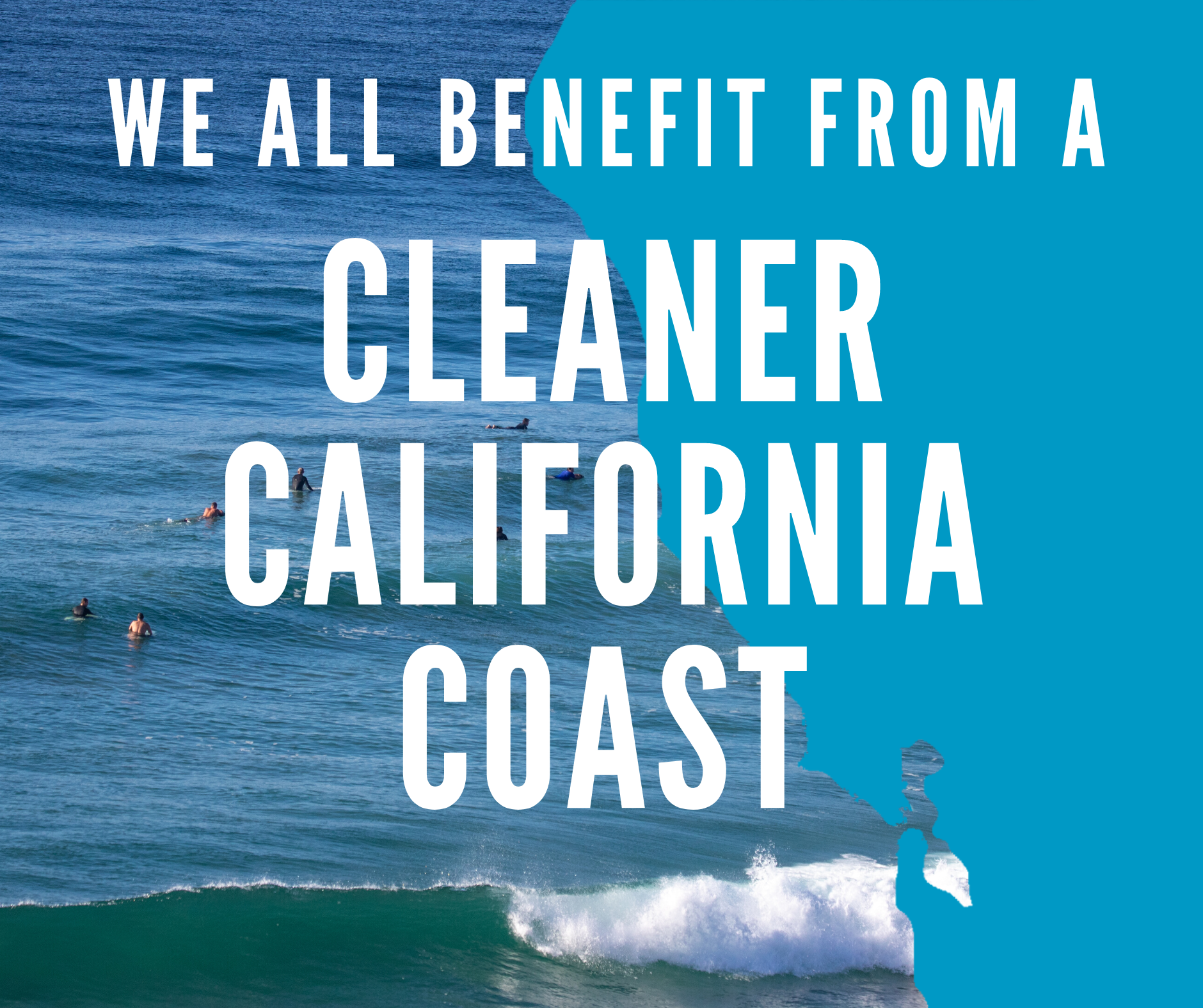 | Empowering People to Create a Cleaner & Healthier Coast
Madeline Nieto Hope, Program Coordinator, and Grace Milstein, Communications Associate The counties of Marin, Sonoma, and Mendocino, along with the Leave No Trace organization, have launched the Cleaner California Coast campaign. This summer’s launch took place in honor of World Oceans Day and is just in time for Plastic-Free July! The Cleaner CA Coast’s vision is to empower people to create a cleaner and healthier coast by embracing the principles of Leave No Trace. Leave No Trace is an ethical framework encouraging visitors to minimize their impact on the natural environment, wildlife, and local communities, therefore ensuring the preservation of natural resources for future generations. By uniting the three counties, local organizations, businesses, and communities behind a shared purpose, the campaign ensures that individuals receive a clear and unified message regarding responsible recreation practices. Over the past year, a dedicated working group consisting of representatives from Marin, Sonoma, and Mendocino counties; Leave No Trace; Marin County Parks; Sonoma County Regional Parks; California State Parks; the National Park Service; federally recognized tribes; non-federally recognized tribes; Sonoma County Tourism; Marin Convention and Visitors Bureau; Visit Mendocino; the Environmental Action Committee of West Marin; and others worked to build a strategic plan to realize the vision, share resources, and lift the work of individuals and organizations who are already engaged in reducing trash and litter. The first step of this campaign is to highlight four important actions visitors can take this summer including 1) bringing reusable items – and saying no to single-use plastics; 2) find a restroom – the side of the road is not a restroom; 3) pack out your trash – there are limited trash bins within coastal communities and beaches, please bring your trash home; and 4) hang on to your butts and vape cartridges – these are toxic pollutants and should not be left on the ground or on the beach. Why EAC Supports this Work & Taking a Lead Role For decades, we have been running stewardship programs, trash clean ups, advocating for trash and pollution policies, and providing community education related to trash and pollution. While this work is necessary and important, without partnerships and coordination across our community, we are continuing to respond to the problem and not getting ahead of it. This campaign highlights the importance of the collective-impact model and how coordinated messaging and partnerships can make a difference to reduce trash and pollution. Continue reading to learn about EAC's role & our new team member |
|
|
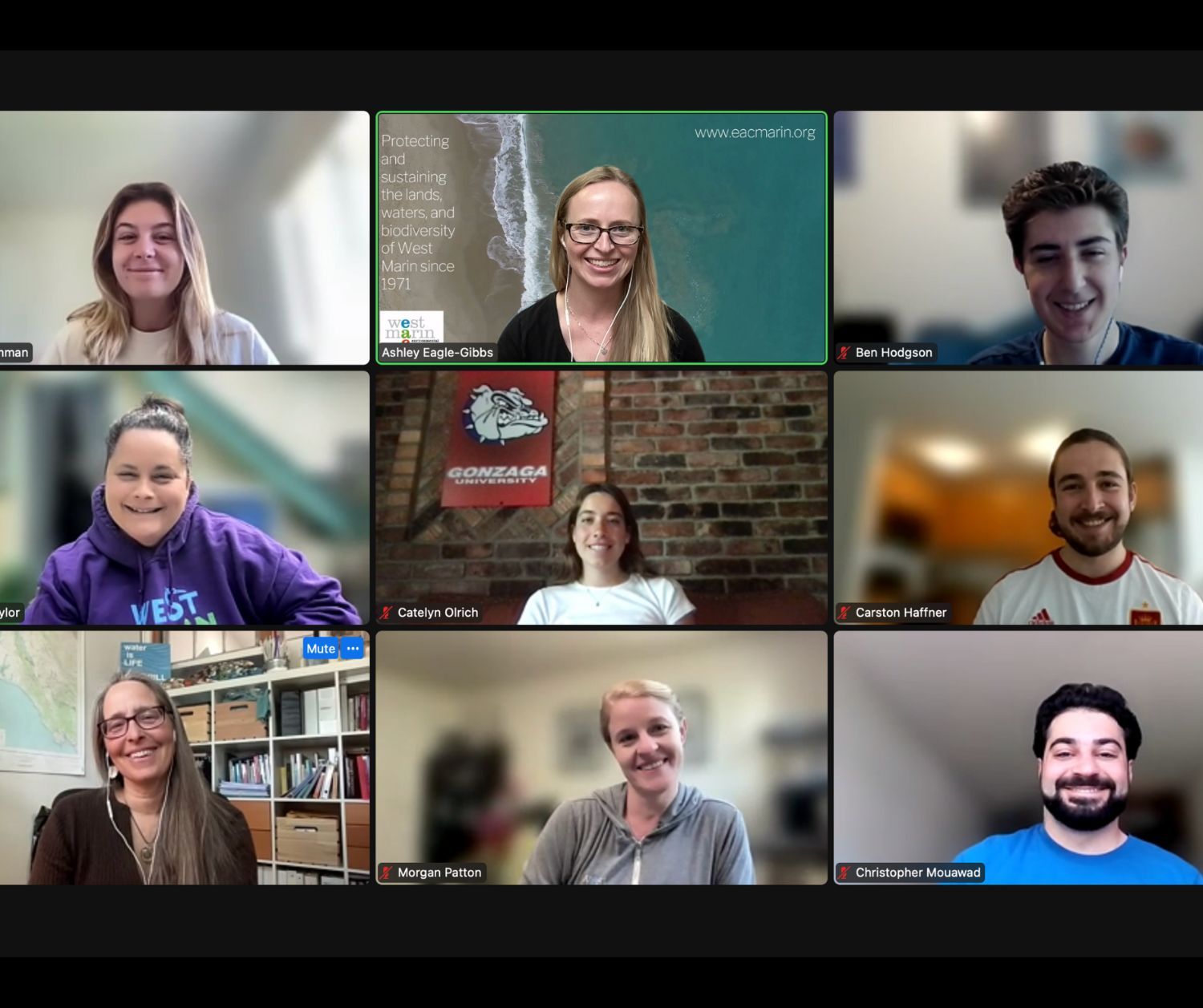 | Welcoming Our 2023 Coastal Advocate and Legal & Policy Interns Ashley Eagle Gibbs, Legal & Policy Director, and Leslie Adler-Ivanbrook, Program Director Our team is thrilled to welcome two Legal and Policy interns and three Coastal Advocate interns this summer! Legal & Policy Interns: Two interns have joined our team this summer to broadly support our lands, waters, biodiversity, and climate work. Carston Haffner is a third-year law student at the University of California College of the Law, San Francisco (formerly UC Hastings). His interest in environmental law and policy was sparked while earning his undergraduate degree in biology. He is passionate about finding solutions to the problems human activity may pose to our natural environments. Christopher Mouawad is a student at UC Davis School of Law. He would like to pursue a career in environmental law, specifically water law. He is interested in exploring how environmental protection can co-exist with development. Prior to law school, Christopher received a B.A. Political Science-Public Service and History at UC Davis, where he developed an appreciation for Northern California's mountains and coasts.
Coastal Advocate Interns: Three interns have joined our team this summer to support our Marin Marine Protected Area (MPA) Watch program and other ocean conservation projects. Cate Olrich is a senior at Gonzaga University where she majors in Environmental Studies with two minors in Sustainable Business and Public Relations. She is passionate about applying her science and humanities education toward environmental stewardship and helping to find local solutions to environmental issues. Jessie Kamman is a sophomore at the University of Hawaii. Spending much time growing up on the seashore and participating in community and habitat restoration projects, she wishes to pursue a career in ocean science and conservation, and in particular, fish population research, to advocate for expanded protections and MPAs. Ben Hodgson is a senior at UC Davis studying Environmental Policy Analysis and Planning. His passion for the natural beauty of West Marin stimulated his interest in pursuing conservation through environmental policy and hopes to work in local or state government policy or planning in the future.
We really enjoy working with this fabulous team of interns! Our internship program provides them with opportunities for real-world job experience that will help shape their future environmental work and life experiences. We hope you can meet some of our interns this summer! Continue reading to learn more about our intern |
|
|
| 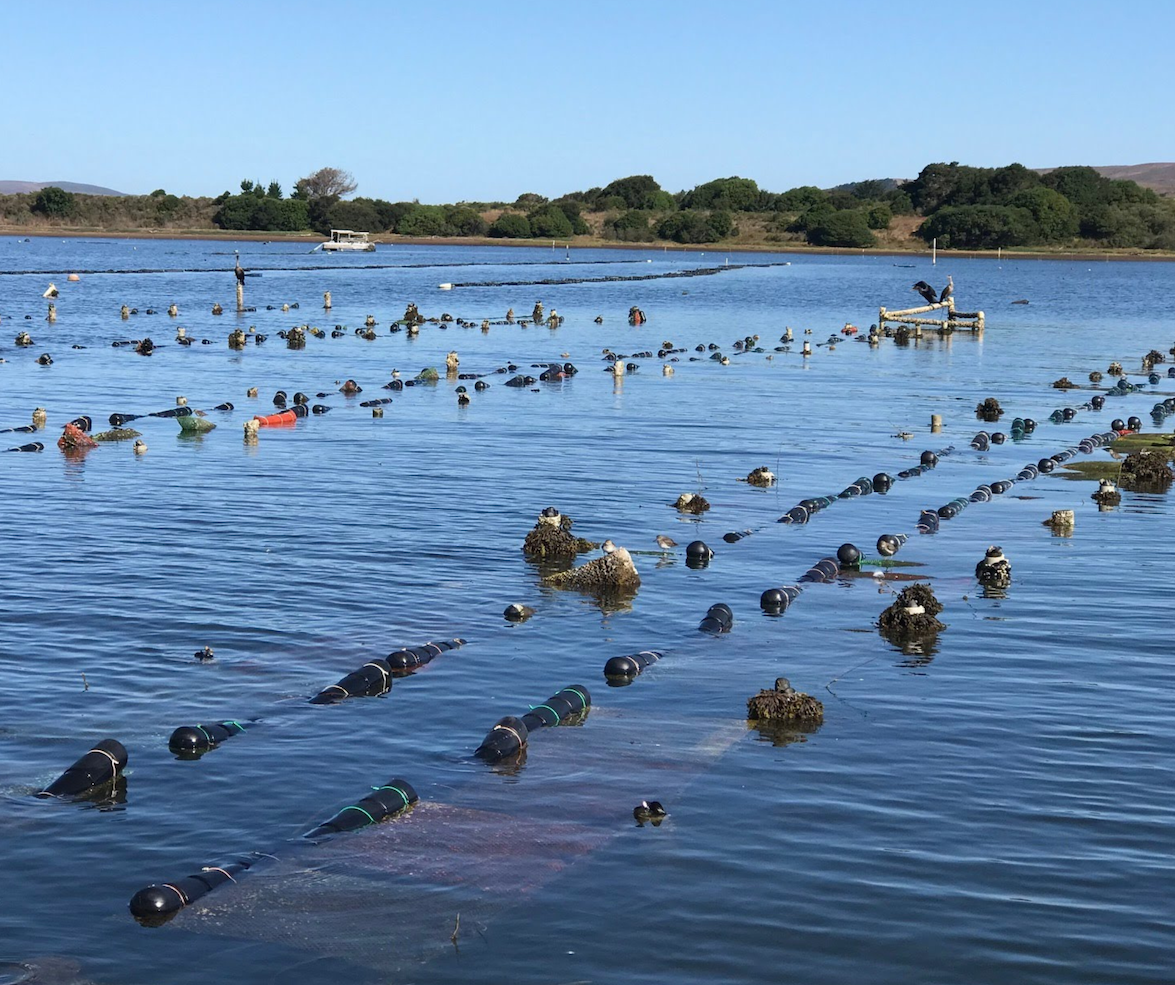 | Voice your Support & Feedback for CA Aquaculture Public Interest Criteria
Ashley Eagle-Gibbs, Legal and Policy Director Our advocacy to protect Tomales Bay’s unique habitats and species from poorly sited development continues, as we push the California Fish and Game Commission (FGC) to create statewide aquaculture public interest criteria, which will be implemented prior to the issuance of new aquaculture leases. We need your help to ensure the FGC understands this issue is important to our membership. Please take our quick survey so we can emphasize the importance of this issue at the FGC Marine Resources Meeting on July 20th. |
| | Why We Care About this Issue: The FGC is responsible for issuing new leases for aquaculture operations in California. When a new lease application was submitted by San Andreas Shellfish near the mouth of Tomales Bay in 2017, we were concerned as the proposed leasing area seems to be located in an area with potential conflicts with harbor seals, shoreline recreational clamming, birds, eelgrass, vessel traffic, and public access. After the FGC accepts a new lease application, they are required by state law to determine whether the lease is in the public interest. Unfortunately, we were surprised to learn there are no existing criteria, guidance, or definition of what the public interest should include. Since 2022, we have been advocating for the development and finalization of criteria. Clear guidance will be a benefit to both the applicant and the environment by discouraging proposals in areas that have negative impacts on habitat, species, navigation, or public access. Continue Reading |
| |
|
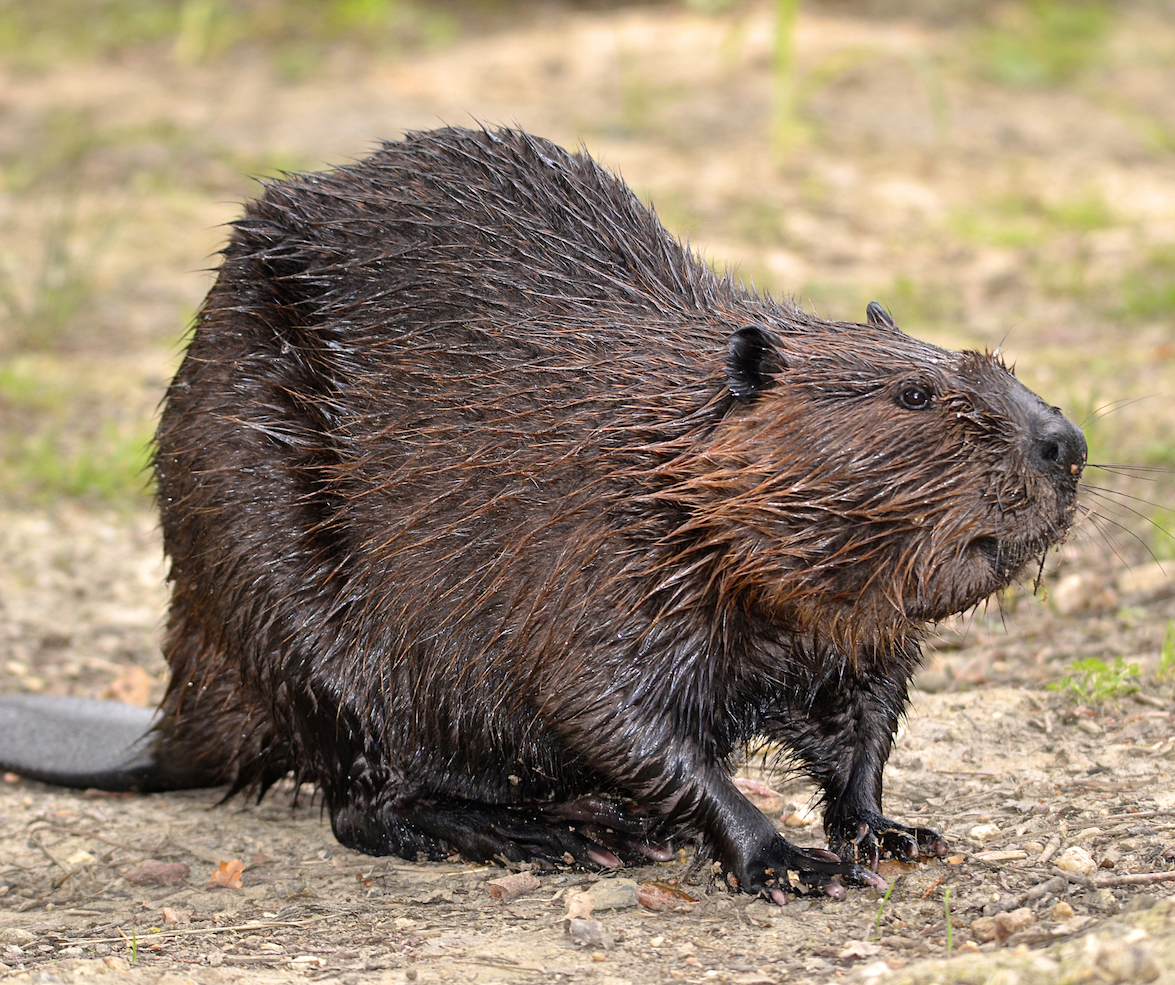 | Bring Beavers Back!
Christopher Mouawad, Legal and Policy Intern On May 24th, we had the opportunity to visit the Doty Ravine Preserve located just outside of Lincoln, California. The preserve is maintained by the Placer Land Trust who have employed a furry friend to assist with their ecosystem restoration project: the beaver. While beavers are well-known for building dams, they have had a reputation of being a nuisance instead of a positive feature of California’s landscape. In fact, Yolo, Sacramento, and Placer counties have some of the highest depredation permits. These permits, issued by the California Department of Fish & Wildlife (CDFW), allow beavers to be lethally removed from an area. During the late 1800s, beavers were completely eradicated from Marin County by hunters and trappers. Today, Marin County is one of the very few Northern California counties with no beaver population. Why are Beavers so Important? The Doty Ravine Preserve is a shining example of why. First, the reintroduction of beavers is not just about having beavers around - it is about how beaver activity changes the physical landscape. Beavers are known as “keystone species.” Keystone species are beneficial to an ecosystem because they support the ability of other species to live in the same environment. Before beavers, Doty Ravine was grassland with a small creek that would dry out in the summer months. After undergoing two years of managed care between 2015 and 2018, the landscape has undergone a cinderella-like transformation since becoming a self-sustaining beaver habitat in 2018. The transformation occurred because beaver activity causes water to permeate into the ground, allowing for year-round water retention that keeps surrounding vegetation alive. The water-rich habitat made possible by beavers is rich with birds, fish, flora, and insects. Second, beaver activity is beneficial for people and agriculture too! Continue Reading |
| |
|
|  | Turning Heads & Changing Habits:
EAC Walks in Western Weekend Parade Grace Milstein, Communications Associate This year's highly anticipated annual Western Weekend occurred on the pleasantly warm first weekend of June. The 75-year old celebration honors West Marin’s agricultural roots and culture. This year, EAC participated in the event’s centerpiece, a parade down the main street in Point Reyes Station. Parade attendees could see our colorful Trash Castle display down the street; we used this event as an opportunity to raise awareness about the issue of single-use plastics connecting plastic to fossil fuels and the importance of consuming less, repairing what we have, and reusing items. The Trash Castle, created by local artists Judith and Richard Lang, was loaned to us for the parade. The Trash Castle is made of marine debris (trash) collected from Kehoe Beach in Point Reyes National Seashore. EAC volunteers, community members, board, interns, and staff carried the structures to display plastic trash often found on local beaches. Lagunitas Open Classroom Kindergarten, 1st, 4th, and 5th graders joined us and walked with their rad handmade Climate Crisis signs while chanting, "No more fossil fuels!" By visually showcasing the accumulated plastic waste, we aimed to create a powerful impact on individuals, raising their awareness about the detrimental effects of single-use plastics, and the urgent need to address the climate crisis. Our hope was that people witnessing the trash castle were inspired to take action and reduce their plastic consumption. We hope to empower individuals to make sustainable choices that contribute to a cleaner environment and a healthier planet. A wonderful Western Weekend was had by all! Thank you to everyone who helped make the parade so much fun and to Judith and Richard Lang! |
|
|
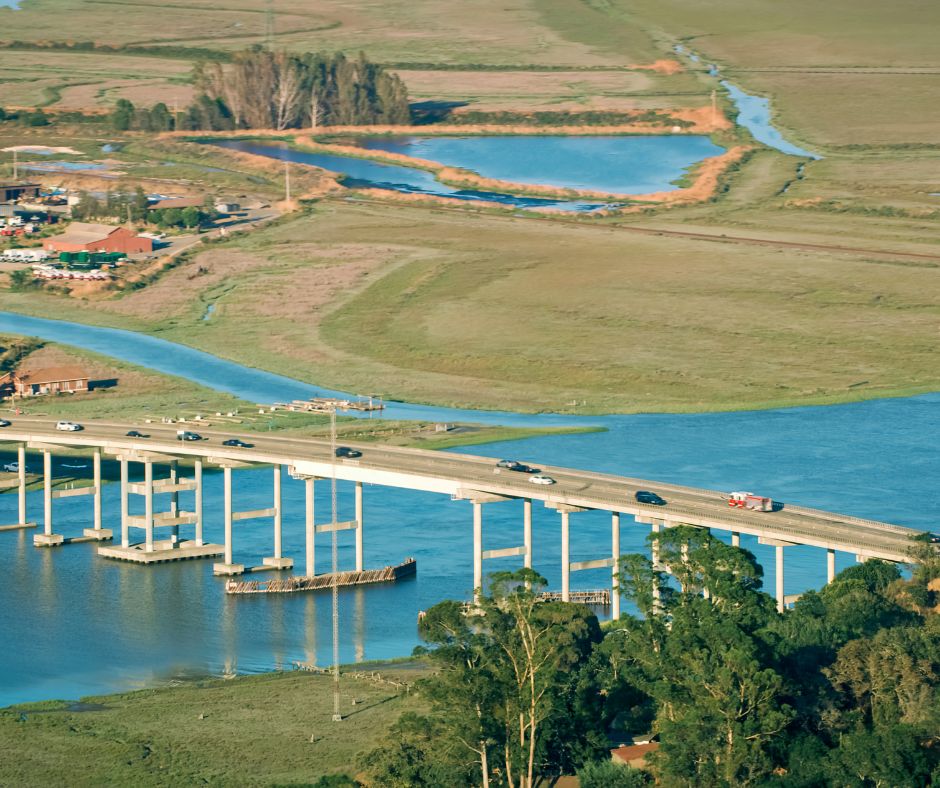 | Watering Down the Clean Water Act
From the Desk of Carston Haffner, Legal and Policy Intern On May 26, 2023, the Supreme Court handed down another momentous decision weakening federal environmental protections - Sackett v. EPA. Not even a year ago, the Court ravaged the Environmental Protection Agency's (EPA) ability to regulate carbon dioxide emissions in West Virginia v. EPA. Yet again, the Court seems out to limit the power of federal agencies to protect our environment; only this time, the Clean Water Act (CWA) is in its crosshairs. Before the Court in Sackett v. EPA, the question was whether CWA protections apply to wetlands. Under the CWA, all "waters of the United States" are federally protected. Since the late 1980s, this was interpreted to include any "wetlands adjacent to waters" already protected. To determine when a wetland was "adjacent," the enforcing agencies, the EPA and the Army Corps of Engineers (Army Corps) employed science-driven approaches evaluating biological and ecological connectedness. The EPA would use these factors to determine the scope of their jurisdiction over wetlands under the CWA. However, in Sackett, the Court has seen fit to redefine "adjacent" for the scientific experts - limiting the scope of CWA jurisdiction. "Adjacent," the majority ruled, means "to have a continuous surface connection with." The result is that the CWA will now only apply to those "wetlands with a continuous surface connection to bodies that are 'waters of the United States' in their own right." This new rule excludes wetlands separated from a covered water only by an artificial barrier, natural river berm, beach dune, or anything else. Why are Wetlands so Important? This ruling is a disaster for wetlands across the country. Wetlands are among the most productive ecosystems in the world. Continue Reading |
|
|
| | | We endeavor to keep our website up to date with the latest information on our campaigns and included some quick links in case the topic you're most interested in isn't featured in this month's e-news! Some links to campaigns are below or click on the images to view those pages directly. |
|
|
| | | |  | Did you know you can set up a recurring gift online? Whether you choose to set up an annual recurring gift or spread out your giving monthly or quarterly,
a recurring gift is a great way to help provide consistent donations, so we can focus on protecting what you love in West Marin. |
|
|
| | | Shop Our Advocate Store Online - Giving with Purpose Give a gift to the advocate in your life and support our mission.
Shop hats, totes, tees, sweatshirts, and more in a variety of styles. Shop Now |
|
|
| | MISSION To protect and sustain the unique lands, waters, and
biodiversity of West Marin. |
|
|
VISION Our work strives to provide long-term protection and conservation of the unique ecosystems of West Marin and serves as a foundation of environmental protection for future generations. |
|
|
| | Contact Us Environmental Action Committee of West Marin (EAC)
PO Box 609 | 65 Third Street, Suite 12
Point Reyes Station, CA 94956
(415) 663.9312 | info@eacmarin.org |
|
|
|
|
|